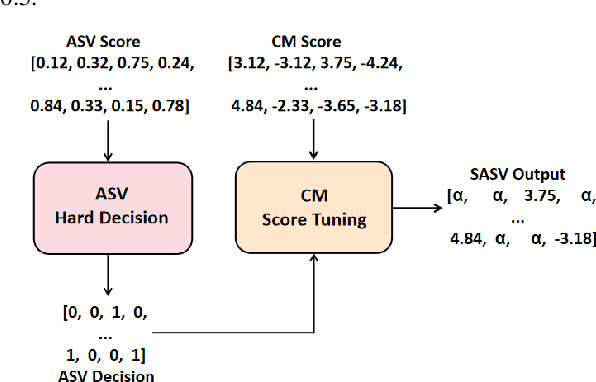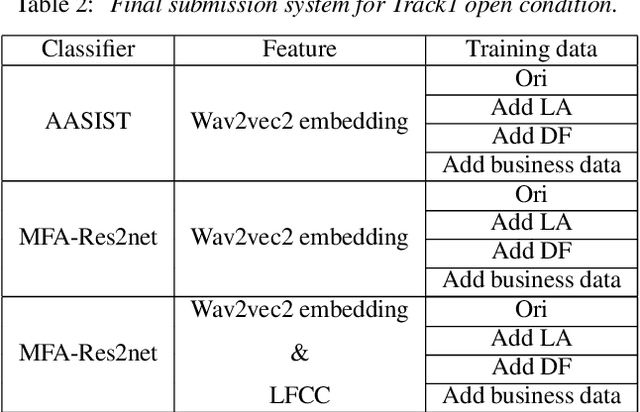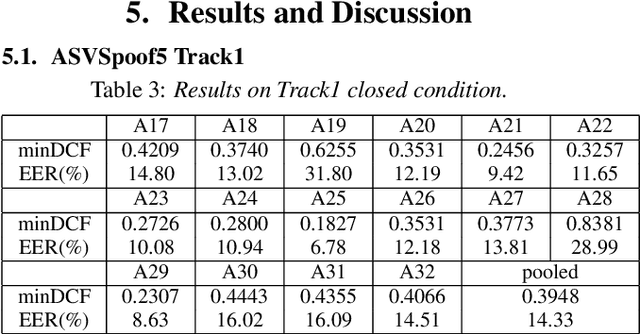Lei Fang
Challenging the Boundaries of Reasoning: An Olympiad-Level Math Benchmark for Large Language Models
Mar 27, 2025Abstract:In recent years, the rapid development of large reasoning models has resulted in the saturation of existing benchmarks for evaluating mathematical reasoning, highlighting the urgent need for more challenging and rigorous evaluation frameworks. To address this gap, we introduce OlymMATH, a novel Olympiad-level mathematical benchmark, designed to rigorously test the complex reasoning capabilities of LLMs. OlymMATH features 200 meticulously curated problems, each manually verified and available in parallel English and Chinese versions. The problems are systematically organized into two distinct difficulty tiers: (1) AIME-level problems (easy) that establish a baseline for mathematical reasoning assessment, and (2) significantly more challenging problems (hard) designed to push the boundaries of current state-of-the-art models. In our benchmark, these problems span four core mathematical fields, each including a verifiable numerical solution to enable objective, rule-based evaluation. Empirical results underscore the significant challenge presented by OlymMATH, with state-of-the-art models including DeepSeek-R1 and OpenAI's o3-mini demonstrating notably limited accuracy on the hard subset. Furthermore, the benchmark facilitates comprehensive bilingual assessment of mathematical reasoning abilities-a critical dimension that remains largely unaddressed in mainstream mathematical reasoning benchmarks. We release the OlymMATH benchmark at the STILL project: https://github.com/RUCAIBox/Slow_Thinking_with_LLMs.
R1-Searcher: Incentivizing the Search Capability in LLMs via Reinforcement Learning
Mar 07, 2025Abstract:Existing Large Reasoning Models (LRMs) have shown the potential of reinforcement learning (RL) to enhance the complex reasoning capabilities of Large Language Models~(LLMs). While they achieve remarkable performance on challenging tasks such as mathematics and coding, they often rely on their internal knowledge to solve problems, which can be inadequate for time-sensitive or knowledge-intensive questions, leading to inaccuracies and hallucinations. To address this, we propose \textbf{R1-Searcher}, a novel two-stage outcome-based RL approach designed to enhance the search capabilities of LLMs. This method allows LLMs to autonomously invoke external search systems to access additional knowledge during the reasoning process. Our framework relies exclusively on RL, without requiring process rewards or distillation for a cold start. % effectively generalizing to out-of-domain datasets and supporting both Base and Instruct models. Our experiments demonstrate that our method significantly outperforms previous strong RAG methods, even when compared to the closed-source GPT-4o-mini.
An Empirical Study on Eliciting and Improving R1-like Reasoning Models
Mar 06, 2025Abstract:In this report, we present the third technical report on the development of slow-thinking models as part of the STILL project. As the technical pathway becomes clearer, scaling RL training has become a central technique for implementing such reasoning models. We systematically experiment with and document the effects of various factors influencing RL training, conducting experiments on both base models and fine-tuned models. Specifically, we demonstrate that our RL training approach consistently improves the Qwen2.5-32B base models, enhancing both response length and test accuracy. Furthermore, we show that even when a model like DeepSeek-R1-Distill-Qwen-1.5B has already achieved a high performance level, it can be further refined through RL training, reaching an accuracy of 39.33% on AIME 2024. Beyond RL training, we also explore the use of tool manipulation, finding that it significantly boosts the reasoning performance of large reasoning models. This approach achieves a remarkable accuracy of 86.67% with greedy search on AIME 2024, underscoring its effectiveness in enhancing model capabilities. We release our resources at the STILL project website: https://github.com/RUCAIBox/Slow_Thinking_with_LLMs.
Accurate Forgetting for Heterogeneous Federated Continual Learning
Feb 20, 2025Abstract:Recent years have witnessed a burgeoning interest in federated learning (FL). However, the contexts in which clients engage in sequential learning remain under-explored. Bridging FL and continual learning (CL) gives rise to a challenging practical problem: federated continual learning (FCL). Existing research in FCL primarily focuses on mitigating the catastrophic forgetting issue of continual learning while collaborating with other clients. We argue that the forgetting phenomena are not invariably detrimental. In this paper, we consider a more practical and challenging FCL setting characterized by potentially unrelated or even antagonistic data/tasks across different clients. In the FL scenario, statistical heterogeneity and data noise among clients may exhibit spurious correlations which result in biased feature learning. While existing CL strategies focus on a complete utilization of previous knowledge, we found that forgetting biased information is beneficial in our study. Therefore, we propose a new concept accurate forgetting (AF) and develop a novel generative-replay method~\method~which selectively utilizes previous knowledge in federated networks. We employ a probabilistic framework based on a normalizing flow model to quantify the credibility of previous knowledge. Comprehensive experiments affirm the superiority of our method over baselines.
Detect Changes like Humans: Incorporating Semantic Priors for Improved Change Detection
Dec 22, 2024



Abstract:When given two similar images, humans identify their differences by comparing the appearance ({\it e.g., color, texture}) with the help of semantics ({\it e.g., objects, relations}). However, mainstream change detection models adopt a supervised training paradigm, where the annotated binary change map is the main constraint. Thus, these methods primarily emphasize the difference-aware features between bi-temporal images and neglect the semantic understanding of the changed landscapes, which undermines the accuracy in the presence of noise and illumination variations. To this end, this paper explores incorporating semantic priors to improve the ability to detect changes. Firstly, we propose a Semantic-Aware Change Detection network, namely SA-CDNet, which transfers the common knowledge of the visual foundation models ({\it i.e., FastSAM}) to change detection. Inspired by the human visual paradigm, a novel dual-stream feature decoder is derived to distinguish changes by combining semantic-aware features and difference-aware features. Secondly, we design a single-temporal semantic pre-training strategy to enhance the semantic understanding of landscapes, which brings further increments. Specifically, we construct pseudo-change detection data from public single-temporal remote sensing segmentation datasets for large-scale pre-training, where an extra branch is also introduced for the proxy semantic segmentation task. Experimental results on five challenging benchmarks demonstrate the superiority of our method over the existing state-of-the-art methods. The code is available at \href{https://github.com/thislzm/SA-CD}{SA-CD}.
USTC-KXDIGIT System Description for ASVspoof5 Challenge
Sep 03, 2024



Abstract:This paper describes the USTC-KXDIGIT system submitted to the ASVspoof5 Challenge for Track 1 (speech deepfake detection) and Track 2 (spoofing-robust automatic speaker verification, SASV). Track 1 showcases a diverse range of technical qualities from potential processing algorithms and includes both open and closed conditions. For these conditions, our system consists of a cascade of a frontend feature extractor and a back-end classifier. We focus on extensive embedding engineering and enhancing the generalization of the back-end classifier model. Specifically, the embedding engineering is based on hand-crafted features and speech representations from a self-supervised model, used for closed and open conditions, respectively. To detect spoof attacks under various adversarial conditions, we trained multiple systems on an augmented training set. Additionally, we used voice conversion technology to synthesize fake audio from genuine audio in the training set to enrich the synthesis algorithms. To leverage the complementary information learned by different model architectures, we employed activation ensemble and fused scores from different systems to obtain the final decision score for spoof detection. During the evaluation phase, the proposed methods achieved 0.3948 minDCF and 14.33% EER in the close condition, and 0.0750 minDCF and 2.59% EER in the open condition, demonstrating the robustness of our submitted systems under adversarial conditions. In Track 2, we continued using the CM system from Track 1 and fused it with a CNN-based ASV system. This approach achieved 0.2814 min-aDCF in the closed condition and 0.0756 min-aDCF in the open condition, showcasing superior performance in the SASV system.
A Grey-box Attack against Latent Diffusion Model-based Image Editing by Posterior Collapse
Aug 20, 2024Abstract:Recent advancements in generative AI, particularly Latent Diffusion Models (LDMs), have revolutionized image synthesis and manipulation. However, these generative techniques raises concerns about data misappropriation and intellectual property infringement. Adversarial attacks on machine learning models have been extensively studied, and a well-established body of research has extended these techniques as a benign metric to prevent the underlying misuse of generative AI. Current approaches to safeguarding images from manipulation by LDMs are limited by their reliance on model-specific knowledge and their inability to significantly degrade semantic quality of generated images. In response to these shortcomings, we propose the Posterior Collapse Attack (PCA) based on the observation that VAEs suffer from posterior collapse during training. Our method minimizes dependence on the white-box information of target models to get rid of the implicit reliance on model-specific knowledge. By accessing merely a small amount of LDM parameters, in specific merely the VAE encoder of LDMs, our method causes a substantial semantic collapse in generation quality, particularly in perceptual consistency, and demonstrates strong transferability across various model architectures. Experimental results show that PCA achieves superior perturbation effects on image generation of LDMs with lower runtime and VRAM. Our method outperforms existing techniques, offering a more robust and generalizable solution that is helpful in alleviating the socio-technical challenges posed by the rapidly evolving landscape of generative AI.
Diffusion Transformer Model With Compact Prior for Low-dose PET Reconstruction
Jul 01, 2024Abstract:Positron emission tomography (PET) is an advanced medical imaging technique that plays a crucial role in non-invasive clinical diagnosis. However, while reducing radiation exposure through low-dose PET scans is beneficial for patient safety, it often results in insufficient statistical data. This scarcity of data poses significant challenges for accurately reconstructing high-quality images, which are essential for reliable diagnostic outcomes. In this research, we propose a diffusion transformer model (DTM) guided by joint compact prior (JCP) to enhance the reconstruction quality of low-dose PET imaging. In light of current research findings, we present a pioneering PET reconstruction model that integrates diffusion and transformer models for joint optimization. This model combines the powerful distribution mapping abilities of diffusion models with the capacity of transformers to capture long-range dependencies, offering significant advantages for low-dose PET reconstruction. Additionally, the incorporation of the lesion refining block and penalized weighted least squares (PWLS) enhance the recovery capability of lesion regions and preserves detail information, solving blurring problems in lesion areas and texture details of most deep learning frameworks. Experimental results demonstrate the effectiveness of DTM in enhancing image quality and preserving critical clinical information for low-dose PET scans. Our approach not only reduces radiation exposure risks but also provides a more reliable PET imaging tool for early disease detection and patient management.
Artwork Protection Against Neural Style Transfer Using Locally Adaptive Adversarial Color Attack
Jan 18, 2024



Abstract:Neural style transfer (NST) is widely adopted in computer vision to generate new images with arbitrary styles. This process leverages neural networks to merge aesthetic elements of a style image with the structural aspects of a content image into a harmoniously integrated visual result. However, unauthorized NST can exploit artwork. Such misuse raises socio-technical concerns regarding artists' rights and motivates the development of technical approaches for the proactive protection of original creations. Adversarial attack is a concept primarily explored in machine learning security. Our work introduces this technique to protect artists' intellectual property. In this paper Locally Adaptive Adversarial Color Attack (LAACA), a method for altering images in a manner imperceptible to the human eyes but disruptive to NST. Specifically, we design perturbations targeting image areas rich in high-frequency content, generated by disrupting intermediate features. Our experiments and user study confirm that by attacking NST using the proposed method results in visually worse neural style transfer, thus making it an effective solution for visual artwork protection.
Retro-BLEU: Quantifying Chemical Plausibility of Retrosynthesis Routes through Reaction Template Sequence Analysis
Nov 08, 2023Abstract:Computer-assisted methods have emerged as valuable tools for retrosynthesis analysis. However, quantifying the plausibility of generated retrosynthesis routes remains a challenging task. We introduce Retro-BLEU, a statistical metric adapted from the well-established BLEU score in machine translation, to evaluate the plausibility of retrosynthesis routes based on reaction template sequences analysis. We demonstrate the effectiveness of Retro-BLEU by applying it to a diverse set of retrosynthesis routes generated by state-of-the-art algorithms and compare the performance with other evaluation metrics. The results show that Retro-BLEU is capable of differentiating between plausible and implausible routes. Furthermore, we provide insights into the strengths and weaknesses of Retro-BLEU, paving the way for future developments and improvements in this field.
 Add to Chrome
Add to Chrome Add to Firefox
Add to Firefox Add to Edge
Add to Edge